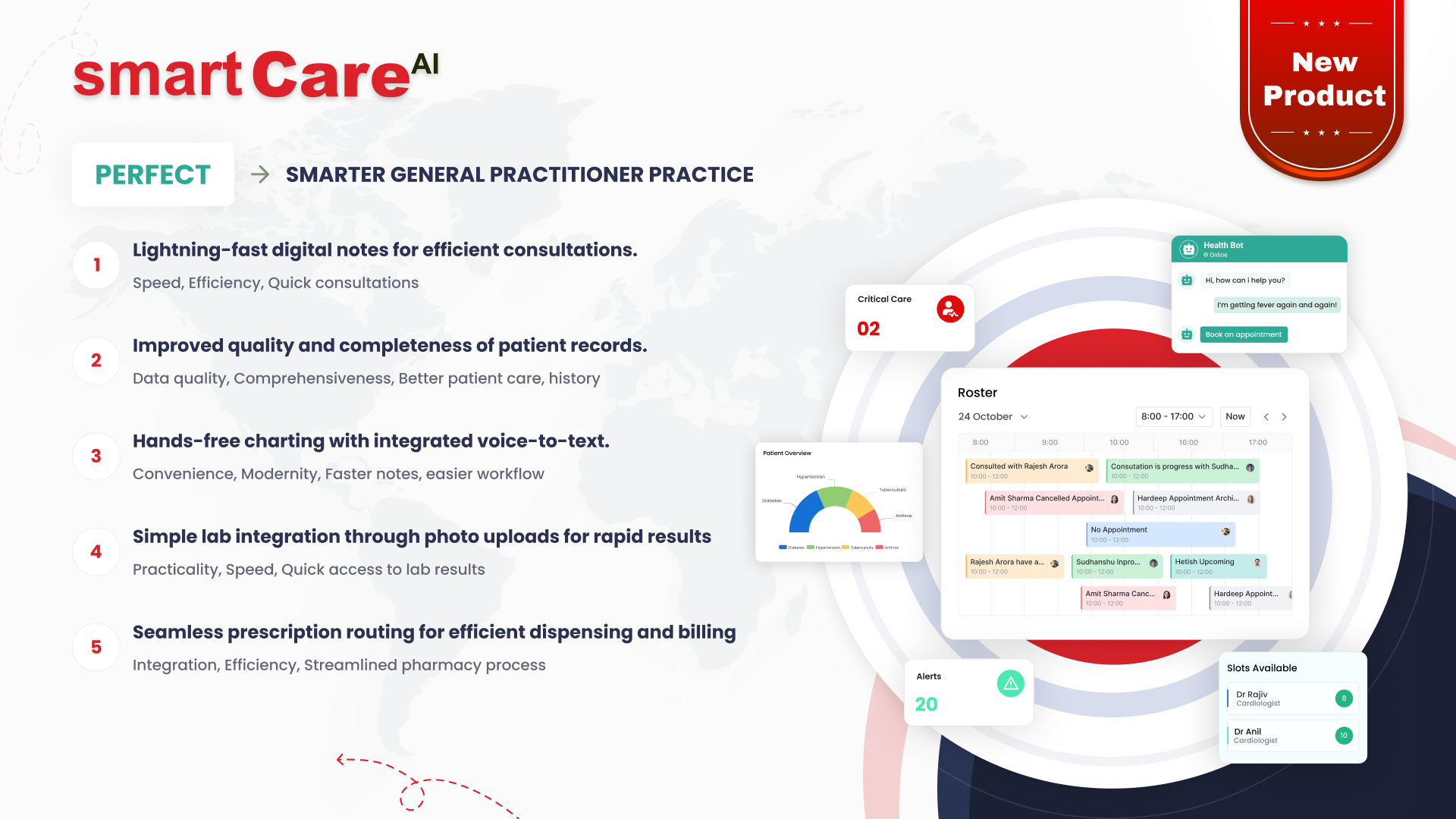
Posted On November 7, 2025
How Wearables Are Integrating with Healthcare Software
The Rise of Wearable Technology in Modern Healthcare
Wearable technology has rapidly evolved from fitness trackers to advanced medical monitoring tools. Devices such as smartwatches, ECG patches, and biosensors now play a vital role in tracking heart rate, oxygen levels, sleep patterns, and more. This growing demand for personalised health tracking has encouraged the healthcare industry to integrate wearable technology into digital health systems for better patient outcomes and efficient care delivery.
How Wearables Collect and Share Real-Time Health Data
Modern wearables are equipped with sensors that continuously gather vital data such as heart rate, temperature, and activity levels. This data is transmitted securely to healthcare software platforms, allowing doctors and medical staff to monitor patients remotely. The seamless flow of information between wearables and healthcare applications ensures early detection of abnormalities and timely medical intervention, improving patient safety and reducing hospital visits.
Connecting Wearables with Healthcare Software Systems
Integration between wearables and healthcare software is made possible through Application Programming Interfaces (APIs) and cloud-based platforms. These systems synchronise patient data from wearable devices to electronic health records (EHRs) and hospital management software. By connecting both technologies, healthcare professionals gain access to accurate, real-time insights that support better diagnosis, treatment planning, and patient engagement.
Improving Patient Monitoring Through Continuous Tracking
Continuous health monitoring powered by wearables has transformed how patients manage chronic diseases and recovery. For example, individuals with heart conditions can use connected ECG devices to share real-time data with their doctors. This ongoing monitoring enables healthcare providers to detect irregularities early, adjust treatment plans quickly, and provide more personalised care, enhancing the overall quality of life for patients.
How Data from Wearables Supports Preventive Healthcare
One of the biggest advantages of integrating wearables with healthcare software is the shift toward preventive medicine. With detailed health data available instantly, doctors can identify risk factors before they escalate into serious conditions. Patients also gain awareness of their daily health habits, leading to better lifestyle choices. This proactive approach helps in reducing healthcare costs and improving long-term wellbeing for individuals.
Enhancing Doctor–Patient Communication with Integrated Tools
One of the most significant advantages of wearables integrated with healthcare software is the improved communication between patients and healthcare professionals. Doctors can now access patients’ real-time health data such as heart rate, blood pressure, or sleep patterns through connected dashboards. This direct access allows physicians to make informed decisions faster and adjust treatment plans more efficiently. For patients, this means fewer clinic visits and more personalised care based on accurate, continuous data rather than occasional check-ups.
The Role of AI and Data Analytics in Wearable Health Insights
Artificial Intelligence (AI) and data analytics play a vital role in transforming wearable data into actionable insights. Wearables generate vast amounts of information daily, and AI algorithms analyse this data to detect trends or early warning signs of potential health issues. For instance, AI can identify irregular heart rhythms or monitor stress levels to recommend preventive measures. The combination of AI and wearables is helping healthcare providers move from reactive treatment to proactive health management.
Challenges in Security and Data Privacy for Connected Devices
Despite the many benefits, data security and privacy remain top concerns. As wearable devices transmit sensitive health data to healthcare software, there’s an increased risk of data breaches or unauthorised access. To ensure patient trust, healthcare providers and developers must adopt strict security measures such as encryption, secure authentication, and compliance with global healthcare data regulations like HIPAA. Building a secure digital ecosystem is crucial to fully unlock the potential of wearables in healthcare.
Real-World Examples of Wearables in Hospital and Home Care
The integration of wearables is already transforming both hospital and home-based care. In hospitals, wearable patches and biosensors help monitor patients post-surgery without needing constant manual checks. At home, devices like smartwatches and fitness trackers alert users and their doctors about irregularities in heart rate, oxygen levels, or sleep patterns. These examples demonstrate how wearables are bridging the gap between continuous monitoring and timely medical response.
What the Future Holds for Wearable and Healthcare Software Integration
As technology advances, wearables will continue to evolve into more intelligent, connected, and predictive tools. Future healthcare software is expected to integrate seamlessly with these devices, creating unified platforms that deliver real-time insights, automate health alerts, and enhance preventive care. With the continued adoption of AI, cloud computing, and IoT, the future of wearable healthcare integration looks both promising and transformative.
Conclusion
The integration of wearable technology with healthcare software is redefining patient care through real-time monitoring, data-driven insights, and proactive health management. As innovation continues, these connected systems will play an even greater role in improving health outcomes and personalising medical care. To explore more about advanced healthcare technology solutions, visit https://smartdatainc.com/.
